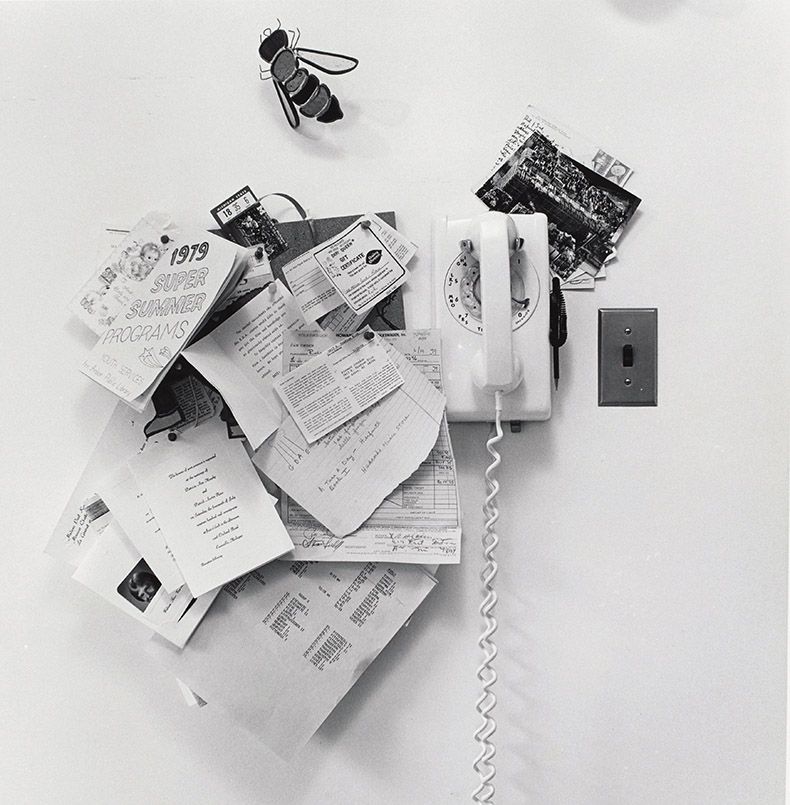From the June 2024 issue of Apollo. Preview and subscribe here.
Once you get your eye in, it’s everywhere. Posters, advertisements, almanacs. Tacked to the brickwork in street scenes by Andries Both or Hogarth, or to tavern benches in interiors by Bruegel or the Brunswick Monogrammist. Look over Saint Jerome’s shoulder in Dürer’s engraving and there’s a row of correspondence, tidily folded and held to the wall by straps; look at Saint Augustine’s feet in the Botticelli painting in the Uffizi and there’s a wastepaper basket’s-worth of scrunched-up notes and drafts.
For the last couple of years, I’ve become more and more drawn to these peripheral scraps. The catch-all term for them is ‘ephemera’, which the historian Maurice Rickards nicely defined as ‘the minor transient documents of everyday life’. I’ve been thinking about why this everyday literature gets pushed to the edges of our vision, or out of sight entirely. About how, if you ask anyone what they’ve read lately, they’ll never tell you, ‘Oh, tickets, labels, receipts, menus…’ They’re more likely to say, ‘Nothing at all,’ even though that’s almost certainly not true. I was pondering this as I wandered around MoMA looking for Kurt Schwitters’ collages of upcycled sweet wrappers and tram tickets. That’s when I saw Joanne Leonard’s photograph Memo Center with Bee, Sue’s Home, Ann Arbor, MI (1979).
There’s a touch of humour here, both in the title and the composition. A large, decorative bee, nearly as big as the telephone, is making its way up the wall, crawling out of the frame. Like the fly in the fruit bowl in a Renaissance still life, it feels like a strategically placed interloper, there to offset the dominant tone, to suggest movement in a scene of stillness or, here, whimsy in a scene of paperwork. The bee is the one element in the photograph that we have to imagine in colour. Everything else – phone, light switch, paper and ink, even the wall – makes perfect sense in black and white.
For me, however, the yellow bee is a red herring. The star of this image is the paperwork itself, the so-called memo center. I love the way that Leonard has taken ephemera and pulled it in from the margins, placing it centre stage. I love the way the clean lines of the phone and the light switch contrast with the explosive sprawl of the paper. This is what ephemera does: it proliferates, won’t stay inside the lines, doesn’t bear easy definition.
Memo Center with Bee, Sue’s Home, Ann Arbor, MI (1979), Joanne Leonard. Museum of Modern Art, New York. Digital image: © The Museum of Modern Art, New York/Scala, Florence/the artist

Zoom in: a sheaf of postcards (one is addressed to ‘Rick & Sue’), a summer programme for the local library’s youth services, a gift voucher for Dairy Queen, a bill for Volkswagen repairs, some fingering notes for a beginner violinist, sports ticket, thank-you note, wedding invitation… A motley assortment, but also a coherent one, the archive of a family at a moment in time. There is something novelistic about how narratives burst out of the frozen instant: Sue and Rick, their broken-down VW and a child learning the violin in the summer of ’79. To a historian, a life is the sum of the documents it leaves behind. Memo Center with Bee teems with life (and not because of the plastic bee).
Zoom out: in her memoir, Being in Pictures (2008), Leonard wrote about becoming a photographer. ‘Men are expected to dedicate themselves to vocations and avocations, but even as a young woman, I had to take myself seriously as an artist in order to allow myself the time, money, and space for my art’. With a sly humour, she spells out her sacrifice in terms of physical space: ‘I built a darkroom […] when I could have fixed up a kitchen.’
In the mid 1970s, Leonard began photographing the kitchens of her friends and neighbours. The focus of the images is frequently on technology – microwaves, telephones, televisions – but it is clear that they are also documenting gendered spaces. In another ‘memo center’ image, Leonard’s camera picks out a sign that reads ‘My house is clean enough to be healthy and dirty enough to be happy’. Again, that tension between the straight lines of the kitchen appliances and the mess of real life. Leonard: ‘I found that most of the kitchen “memo centers” I photographed had some sense of contrariness about domesticity.’
Of course, then, Memo Center with Bee is a political image – its message, that this is work too: things that need to be done, a family to be organised. The pile of papers and the kitchen telephone might as well be an office desk glued to the wall. But what I like most about the image is how boldly it takes its place in that lineage of art that remembers to represent those minor transient documents, the real stuff of everyday life.
From the June 2024 issue of Apollo. Preview and subscribe here.


